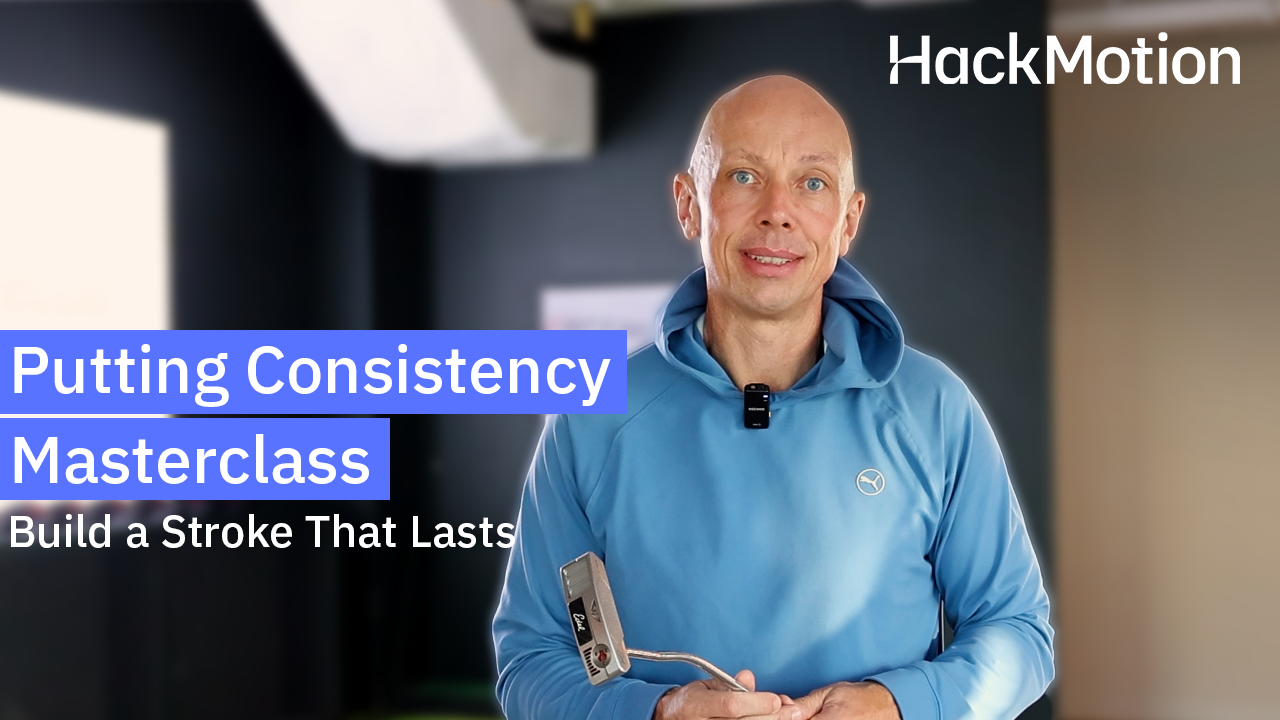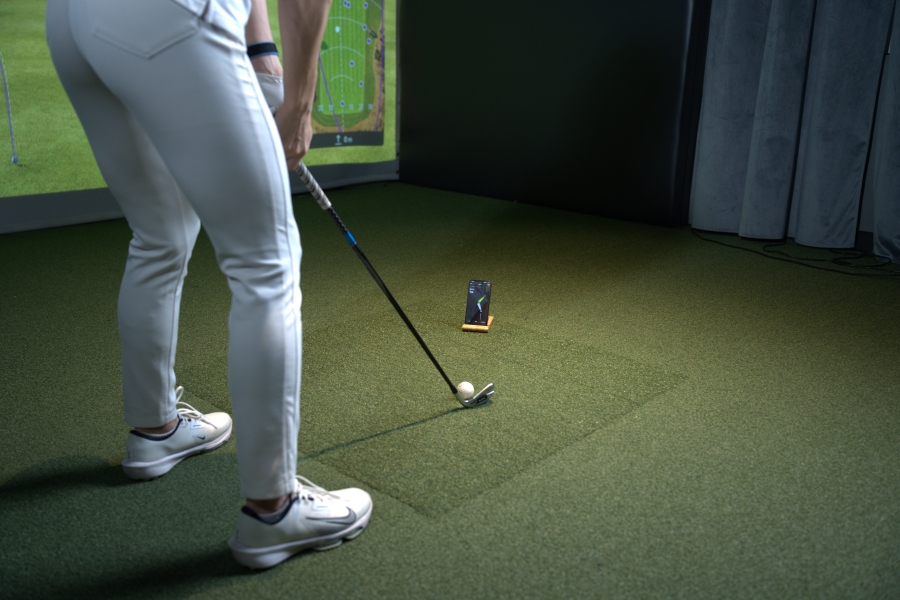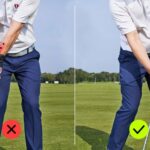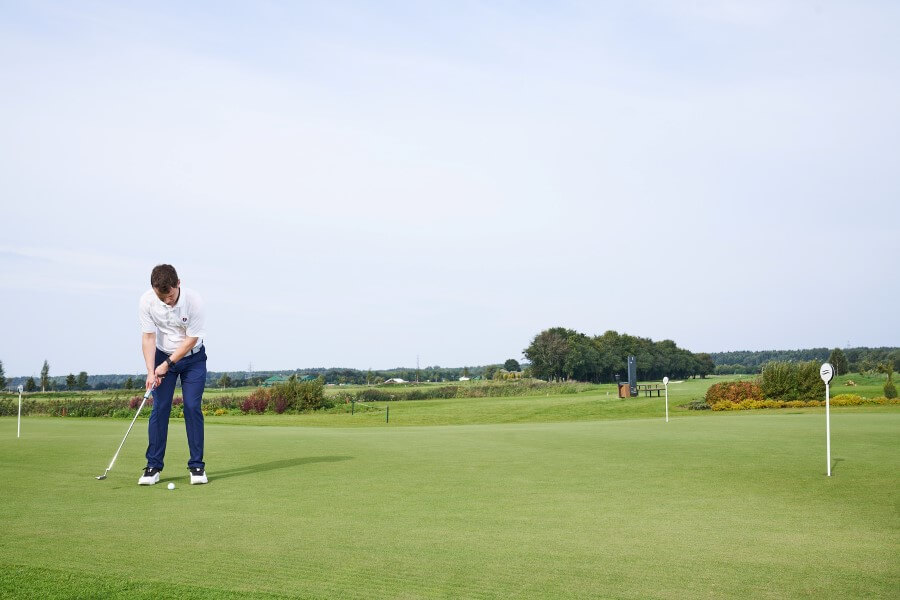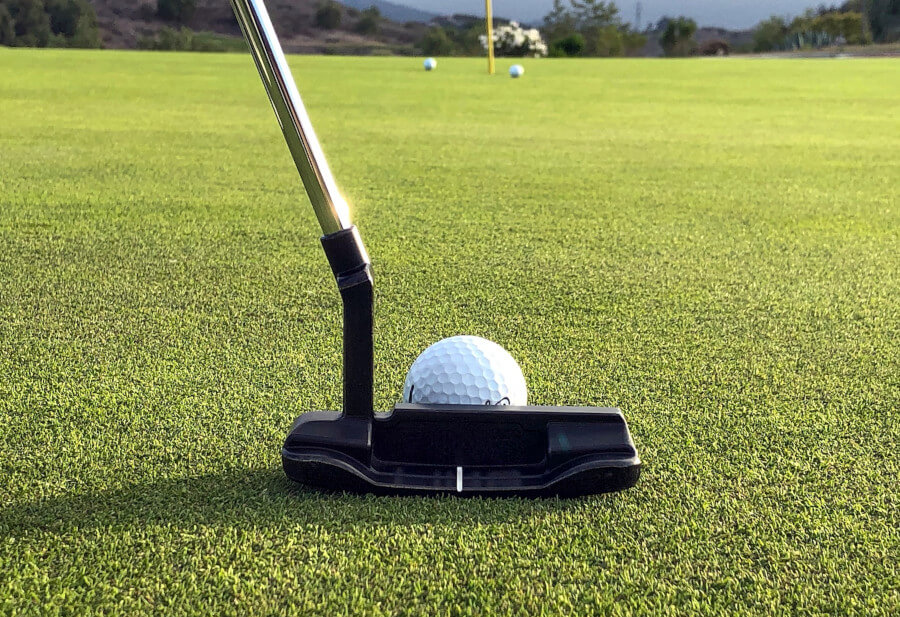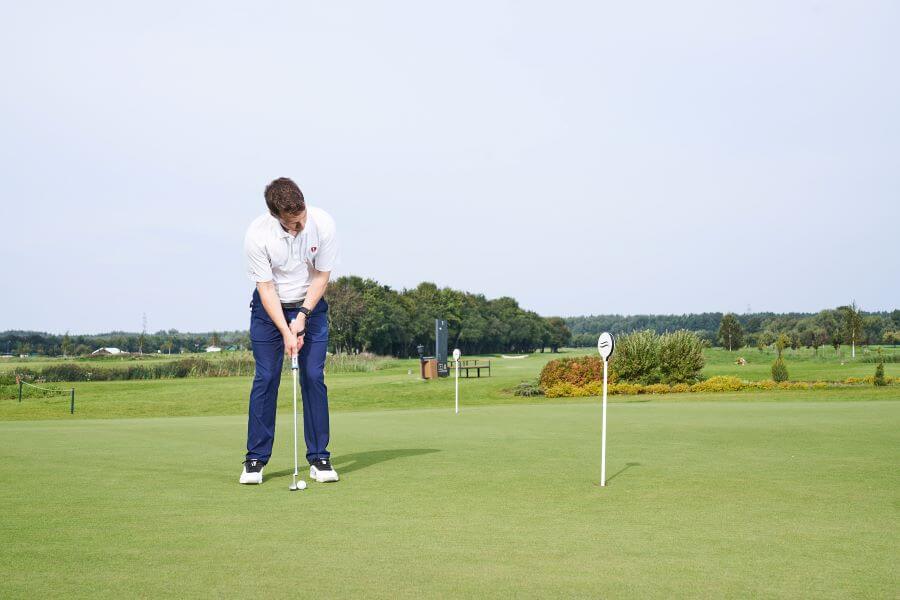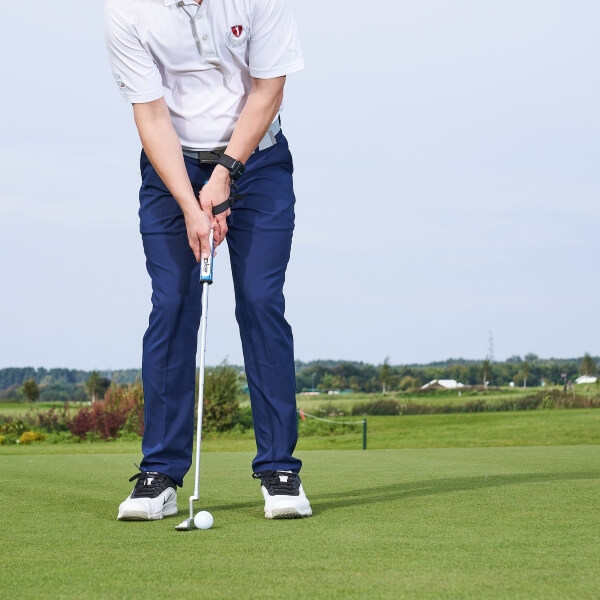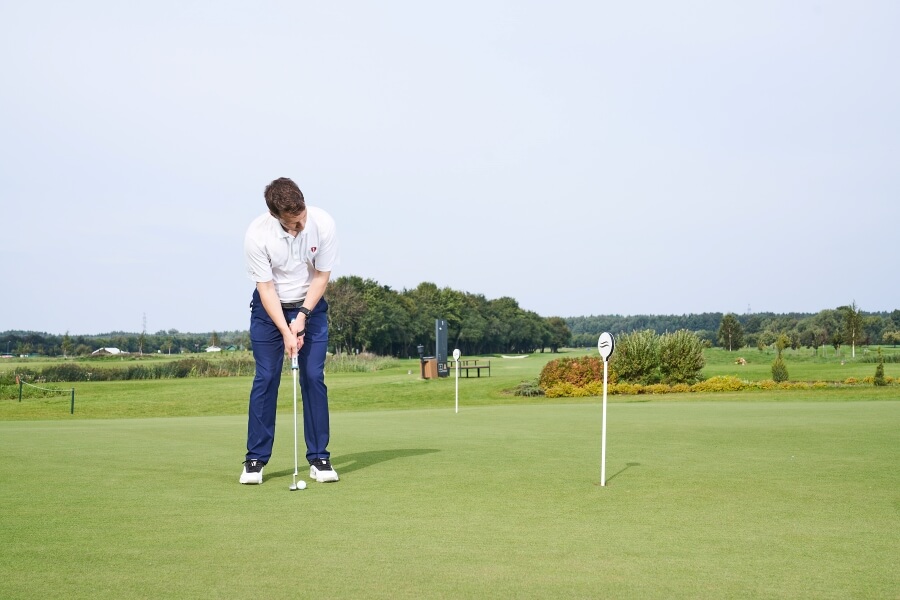Perfect Your Putting Stroke: Tips, Techniques and Drills to Sink More Putts
There is a lot of general advice out there on how to become a better putter. For more advanced players and those looking for quicker improvement, it makes sense to focus on the actual putting stroke.
Having analyzed more than 1,000,000 golf swings and putting strokes, we have collected some valuable insight into what works and what doesn’t on the greens.
How to Improve Putting Stroke (Key Takeaways)
If you don’t have time to read the entire guide right now, here are some of the key tips you can run with.
- Consistency in the putting stroke is more important than the overall quality of the stroke.
- Wrist motion controls the clubface; with inconsistent wrist motion, expect inconsistent putts.
- The wrists do, in fact, move in the putting stroke; even the best players in the world have some wrist movement. It simply happens because of the natural swinging of the putter head.
- Even if you don’t think you are swinging on an arc, your putter will have a slight arc to it, making wrist motion in putting even more essential.
- Speed of stroke, overall length of stroke, and tempo are all key aspects that every player must focus on and perfect.
- The consistency of your grip and hand position will play into how consistent your putting stroke is.
Contents
- Proven Tips & Drills to Perfect Your Putting Stroke
- 1. Limit the Range of Wrist Movement in Your Stroke
- 2. Putting Stroke Tempo Should be 2:1 (Test it!)
- 3. Consistently Controlling the Putter Face During the Putting Stroke
- 4. Grip Consistency Leads to Stroke Consistency
- 5. The Path Options All Players Have
- 6. Controlled and Lower Takeaway
- 7. Distance Control: Matching Stroke Length to Tempo
- The Best Ways to Improve Your Putting Stroke
- FAQs
- Final Thoughts
Proven Tips & Drills to Perfect Your Putting Stroke
1. Limit the Range of Wrist Movement in Your Stroke
HackMotion’s large database of recorded putting strokes clearly shows that Tour players limit the range of wrist motion in their stroke — and, just as importantly, they repeat that motion consistently.
Amateurs, on the other hand, often move their lead wrist too much and vary the motion from stroke to stroke. This inconsistency affects strike quality, speed control, and start line.
With the HackMotion wrist sensor, you can measure and train all three key wrist motions in putting:
- Flexion / Extension – bowing or cupping the wrist, which changes loft and launch.
- Radial / Ulnar Deviation – hinging or unhinging, which influences strike location and speed.
- Global Rotation – twisting the putter face, which controls the ball’s starting direction.

These changes are small — often impossible to see on camera — but measurable with HackMotion. By monitoring your data and learning to keep these angles stable, you can build a repeatable putting stroke.
Once you bring awareness to your wrist motion and get immediate feedback, it becomes much easier to ingrain a stable stroke you can trust under pressure.
2. Putting Stroke Tempo Should be 2:1 (Test it!)
Great putters almost always keep a 2:1 ratio between their backswing and downswing — the downswing takes about half the time of the backswing.
This stays the same for short or long putts; only the stroke length changes.
Amateurs often lose distance control by rushing the downswing or slowing the backswing too much. With the HackMotion wrist sensor, you can measure your exact timing and see how close you are to that 2:1 benchmark.
Train smarter at home—putting, short game, and full swing. Start with these putting drills to practice at home, then expand your routine with our full guide on how to practice golf at home.
How to Practice:
- Use HackMotion’s metronome (around 75 bpm) and match the top of your backswing to one beat, follow-through to the next (“one-two, one-two”).
- Start without a ball, then progress to putts of different lengths while keeping the same tempo.
Consistent timing builds repeatable distance control and makes your stroke easier to trust under pressure.
3. Consistently Controlling the Putter Face During the Putting Stroke
You are the only one in charge of your putter face, and your wrists play a big role in that control.
Many players have been taught to keep the putter face on the target line with the “straight back, straight through” technique. After wearing HackMotion for just a few minutes, you’ll quickly realize this isn’t actually possible and trying to force it can cause more harm than good.
When you fight to keep the putter perfectly straight, you often end up making last-second wrist adjustments including unwanted radial or ulnar deviation.
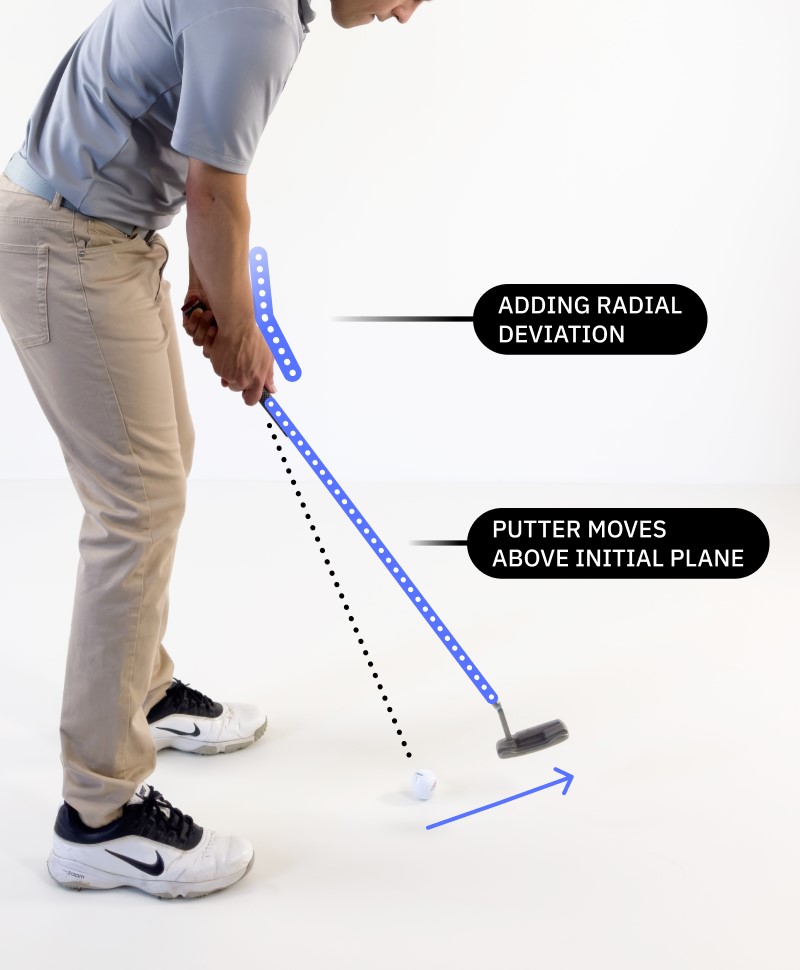

This not only changes your face angle but also affects where you strike the ball on the putter face, which hurts distance control.
The reality is, there will always be a slight natural arc in your putting stroke, even if it feels “straighter” to you.
With HackMotion, you can measure and manage how much your wrists move up and down (deviation), keep that movement within an optimal range, and start learning what a stable, repeatable path actually feels like.
4. Grip Consistency Leads to Stroke Consistency
The grip you take does not matter all that much. You can play with the left hand low, the claw, the cross-handed, and anything in between. However, if you put your hands on the club in a different position each time, you will pay for it when it comes to results.
Your putting grip must be consistent to create a consistent putting stroke.
HackMotion can help you get your hands on the club the same way every time. There is no perfect position to start; all players have slightly different starting points because of their natural hand, wrist, and arm position.
Use the HackMotion wrist sensor to ensure you place your hands on the club within a similar range or position each time.
5. The Path Options All Players Have
The path is the back-and-forth motion of the putter head during the stroke. As putts get longer, the stroke and its natural arc will also get longer.
What matters most is that the putter face returns to the ball square at impact, regardless of how much arc there is.
Common path and face combinations:
- Out-to-in path + square face to the path = Pulled putt
- In-to-out path + square face to the path = Pushed putt
- Square path + closed face to the path = Miss left
- Square path + open face to the path = Miss right
- Square path + square face to the path = Straight putt
To improve, start by tracking your misses on the course. Are most of your putts missing left or right?
Once you have that pattern, take a few videos of your stroke to identify whether the issue is in the path, the face angle, or both.
Quick Tip: A putting string is one of the simplest tools for path training. Set it up over your intended target line and practice rolling putts under the string. It will improve your ability to start the ball on line and help you train a repeatable clubhead path.
6. Controlled and Lower Takeaway
The takeaway in putting is just as important as it is in your full swing, but it’s not about lifting the putter straight up or locking out your wrists. In fact, your wrists move in every putting stroke, whether you notice it or not.
The key is controlling flexion and extension (bowing and cupping) during the takeaway so you deliver the same loft and shaft lean at impact.
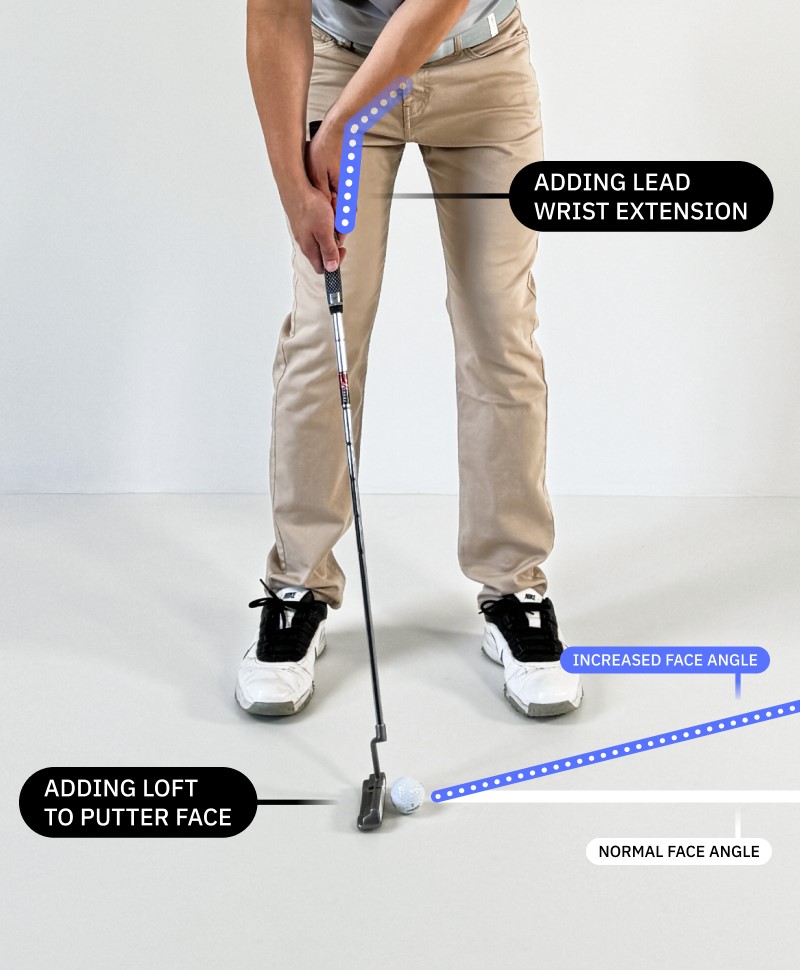
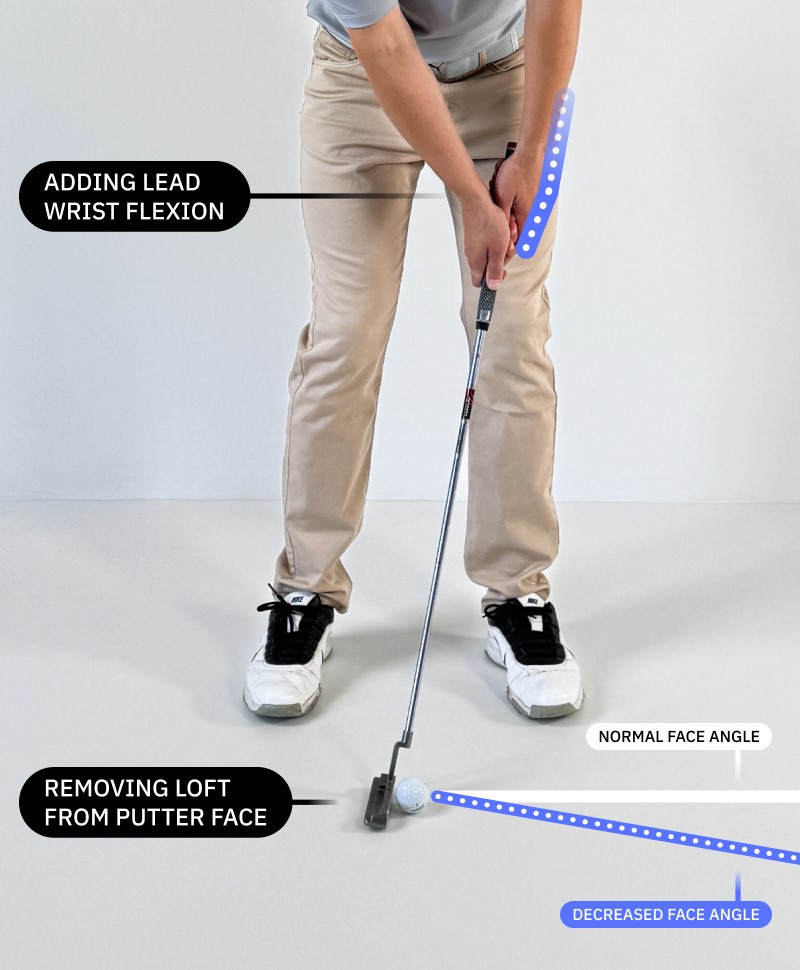
Lifting the putter abruptly or adding too much wrist motion early can change loft, alter the face angle, and move the strike off the sweet spot all of which affect both direction and distance.
With HackMotion, you can measure your wrist angles in real time and train a smoother, more stable takeaway.
The goal is to keep the putter head low to the ground, move the arms and body together, and prevent sudden wrist changes that disrupt your path and contact.
7. Distance Control: Matching Stroke Length to Tempo
One of the fastest ways to improve your putting is to control distance by pairing the right stroke length with a consistent tempo. Most golfers change both without realizing it, leading to inconsistent speed on the greens.
Set up three different stroke lengths with tees on the ground: short, medium, and long, and pair them with targets at varying distances.
Use HackMotion’s metronome feature (start around 75–80 bpm) and match the end of your backswing to one beat and your follow-through to the next.
Begin without a ball to groove the timing. Then, hit putts to each target using the same tempo for all stroke lengths. The stroke length should be the only thing that changes; the rhythm stays constant.
Once you train this skill, your stroke will naturally adjust for different distances while keeping your speed control steady.
The Best Ways to Improve Your Putting Stroke
Now that you have the key fundamentals of what it takes to improve your putting stroke.
Here are some of the best drills out there to get it done.
Chopsticks Drill
Purpose: Train a connected putting stroke by limiting unnecessary wrist movement and improving stability.
Why it works: By keeping your arms and torso moving as one, the Chopsticks Drill makes it harder to manipulate the putter with your wrists. This promotes a more consistent face angle and loft at impact, which improves both start line and speed control.
Chopsticks Drill – Step by Step
- Join the sticks – Wrap the elastic band around one end of the two alignment sticks so they stay together like a pair of chopsticks.
- Set under arms – Slide the sticks under your upper arms so they rest between your arms and torso.
- Add the putter – Hold your putter normally and rest the shaft in the “cradle” created by the sticks.
- Make practice strokes – Rock your shoulders to move the putter back and through. Any wrist flicking or hinging will cause the shaft to shift in the sticks, giving instant feedback.
- Hit putts – Once you can keep the shaft stable, hit putts while maintaining that same connected motion.
Putter Gate Drill
Purpose: Improve center-face contact and control radial/ulnar deviation (wrist hinging) during the stroke.
Why it works: The Putter Gate Drill forces you to control the path and face of the putter, making off-center strikes obvious. By pairing this with HackMotion feedback, you can monitor wrist stability to ensure your stroke isn’t being manipulated by excess hinging.
Putter Gate Drill – Step by Step
- Set the gate – Place two tees in the ground just wider than the width of your putter head.
- Position the ball – Place a ball in the center of the gate.
- Make practice strokes – Without hitting a ball at first, swing the putter through the gate without touching the tees.
- Hit putts – Once you can pass through cleanly, hit putts while still keeping the putter head centered through the gate.
- Tighten the gate – As you improve, move the tees slightly closer together to demand more precision.
Ball Gate Drill
Purpose: Improve start line control by ensuring the putter face is square at impact.
Why it works: A ball rolling through the gate confirms that your putter face was square at impact. Combining this with HackMotion’s real-time wrist angle feedback allows you to pinpoint exactly how your wrist rotation is influencing your start line.
Ball Gate Drill – Step by Step
- Set the ball gate – Place two tees (or a gate aid) on your target line, about 12–18 inches in front of the ball. The gap should be just wide enough for the ball to roll through without touching.
- Set up for the putt – Align your putter to your target and place the ball just behind the gate.
- Roll putts – Putt the ball through the gate without touching the tees. If the ball hits a tee, your face angle was off at impact.
- Adjust difficulty – Narrow the gap to increase the challenge as you improve.
FAQs
Here are a few of the most commonly asked questions about the putting stroke and how to perfect it.
How do I make sure I have a perfect stroke while putting?
It’s very difficult to know if you are making the perfect stroke while you are in the middle of the stroke. Wearing a putting sensor like HackMotion can help you get real-time feedback on your stroke while you are in the middle of it.
Should you break your wrists when putting?
Your wrists will move slightly during your putting stroke. The most important thing about wrist movement in the putting stroke is consistency. If you break your wrists the same way each time, you will make more putts. However, it is easiest to keep wrist motion to a minimum.
What is the secret to consistent putting?
The secret to consistent putting is creating a consistent stroke. If you have a putting stroke you can repeat, you will be a great putter. There are so many variables in putting; don’t let one of them be your putting stroke itself.
How do you putt without breaking your wrist?
There will be some wrist movement and bending in the wrists, even though the professionals do this. However, if you can limit the amount and keep it consistent in every stroke, you will make more putts.
Stop feeling like you need to stay locked in place; you can allow for a little rotation and movement as long as it’s repeatable.
Final Thoughts
Perfecting the putting stroke is a little more complicated than “getting better at putting.” This is where we broke down what your hands should be doing, how your wrist should control the putter face, and why all of this makes an impact in your game.
As you can see, having a HackMotion makes learning about your putting techniques all that much easier. Take that knowledge out on the course to become a better player.
